Bearded dragons are fascinating creatures and are known for their unique physical features, including their beard-like structures, which they puff up to scare away predators or to show their dominance. But one thing that many people are still unsure about is whether bearded dragons have teeth? In this blog post, we will discuss all about bearded dragon teeth and answer some of the most frequently asked questions about them.
Bearded Dragons: General Information
As reptile enthusiasts, one of the popular pets today is the Bearded Dragon. Whether you’re considering adopting one or are just fascinated by them, this part of our article will provide you with comprehensive information. With us you’ll learn all you need to know about Bearded Dragons.
Origin and Habitat
Bearded Dragons are native to Australia and can be found in the arid, desert shrublands and woodlands. They usually spend most of their time on the ground but can climb trees and bask under the sun.
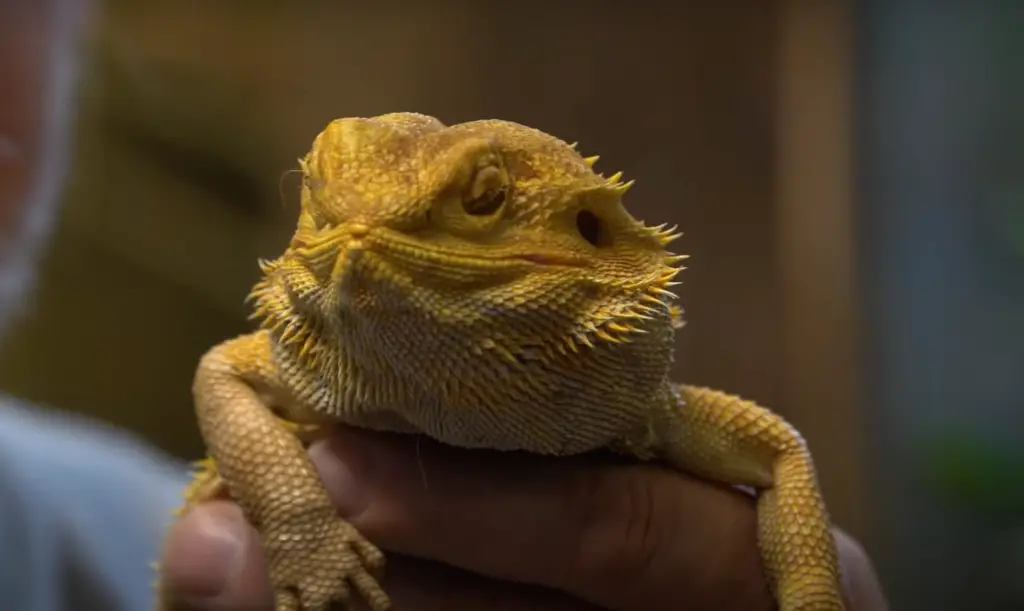
As a pet, a terrarium of 40-gallon size or larger is recommended as they are equipped with the proper heating and lighting in the appropriate temperature range.
Diet
As for these reptiles’ diet, it varies with age, size, and stage of development. Juvenile dragons have a high protein requirement and should eat a diet that contains crickets, mealworms, waxworms, and other insects. However, adult dragons have a different diet, and the majority of it should be comprised of healthy greens, fruits, and vegetables. Leafy greens like mustard greens or collard greens, carrots, and bell peppers are some favorites for beardies.
Behavior
Bearded Dragons have a lot of personality despite their reptilian nature. They are relatively easy to tame, non-aggressive, and love human interaction.
They are social animals and enjoy cohabitation with other dragons, but housing two males together can result in aggression.Breeding
These reptile pets breed easily in captivity and reach sexual maturity at around 8-18 months of age. It’s easy to sex dragon by looking at the underbelly and identifying the presence of hemipenal bulges in males. Females lay their eggs in a clutch, from 10-30 eggs, in sand or vermiculite. In general, breeding should be left to the expert but can be an interesting experience for reptile enthusiasts under the right circumstances.
Health and Lifespan
Bearded dragons have a lifespan of 8-12 years when kept in optimal conditions. They are a healthy species when given the correct environment and diet. Common health problems include metabolic bone disease or respiratory infection, which can be avoided with proper attention and care. Regular vet checks and proper sanitation in their enclosure are critical in preventing infections. [1]
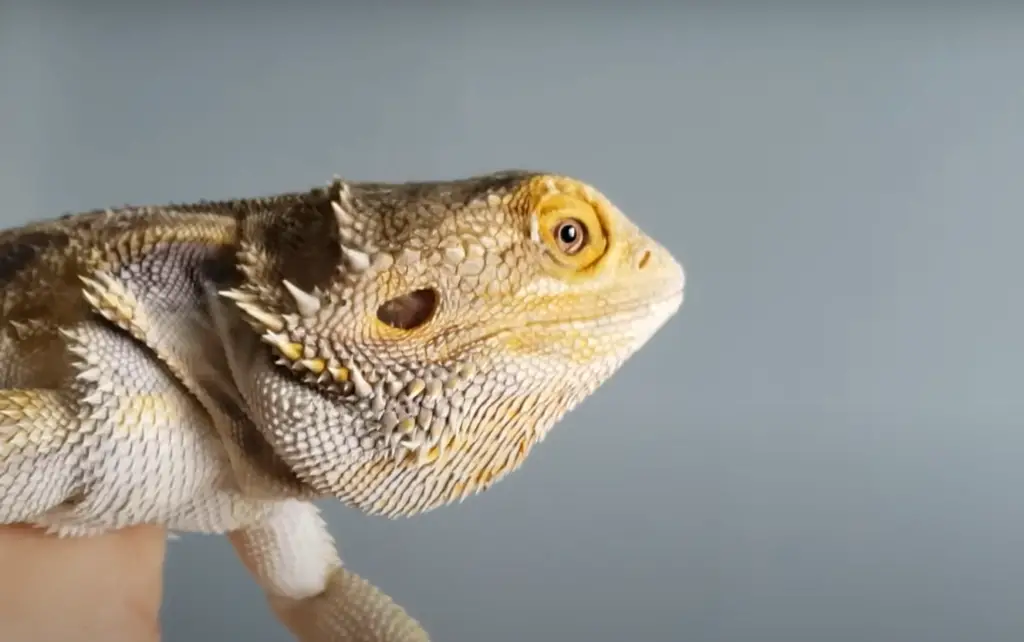
With proper care, Bearded Dragons are beautiful animals that may become fantastic pets. They offer a bit of personality and little quirks that make them perfect pets for reptile enthusiasts. In understanding their natural habitat, diet, behavior, breeding, health, and lifespan, we can give them all the necessary care and attention they need to thrive and be happy.
Top Interesting Facts About Bearded Dragons
Bearded dragons are unique and fascinating creatures that attract both professional herpetologists and casual pet owners.
Here, we’ll share some of the top interesting facts about bearded dragons that will surprise and delight you.They Have a Third Eye
One of the most interesting facts about bearded dragons is that they have a third eye or “parietal eye” located on top of their head. This eye cannot see images like the other two, but it can detect light and measure day length and help regulate the reptile’s circadian rhythms. The parietal eye is a unique adaptation to help the bearded dragon regulate its metabolism and bask in the sun.
They Are Great Communicators
Bearded dragons are social creatures, and they communicate with each other using a variety of signals. For example, if a bearded dragon wants to assert dominance, it will bob its head and puff out its beard. If it wants to show submission, it will flatten its body and head down. They can also communicate through tail wagging, arm waving, and even blinking.
They Can Change Color
While most bearded dragons are shades of brown, beige, or gray, they have the ability to change color depending on their mood, temperature, and environment. For example, a bearded dragon that is stressed or anxious may turn darker in color, while one that is happy and relaxed may lighten up. The color change is a natural adaptation that helps bearded dragons regulate their body temperature and avoid predators.
They Love to Eat
Bearded dragons are omnivores, which means they eat both plants and animals. In the wild, they eat insects, small rodents, and vegetation. As pets, they are fed a mixture of commercial diets and fresh vegetables and fruits. They have a voracious appetite and will eat almost anything they come across.
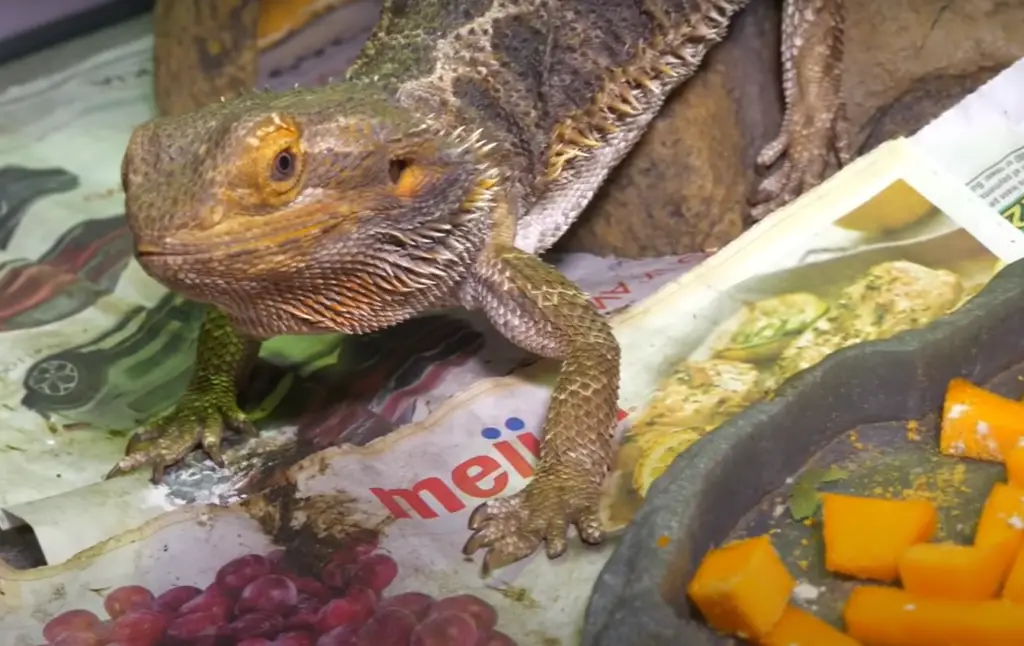
They also have a unique way of eating – they use their long, sticky tongues to catch their prey and then crush it with their teeth before consuming it.
They Are Loyal Pets
Many people think of reptiles as standoffish and unaffectionate, but bearded dragons are actually very affectionate and loyal pets. They have a great memory and can recognize their owners and even respond to their voice. They enjoy being held and petted and can form strong bonds with their human family members. With proper care and attention, a bearded dragon can thrive and provide many years of companionship.
Bearded dragons are amazing creatures with many interesting facts and quirks that make them attractive pets for many people. Whether you are a first-time reptile owner or a seasoned professional, there is always something new to learn about these fascinating animals. By understanding their unique adaptations and behaviors, you can provide the best care and environment for your bearded dragon and develop a deep and rewarding relationship with your scaly friend.
Bearded Dragons Anatomy
To start with, it’s important to note that beardies are really interesting creatures that have been part of the pet trade for years, and one of the reasons why people love them is their unique anatomy. Their anatomy is made up of both external and internal parts, which has a lot to do with their behavior, physiology, and overall health. Understanding more about their anatomy can help you take better care of your pet dragon. Now we offer you to explore some of the fascinating aspects of bearded dragons’ anatomy. From their unique beard to their digestive system, we’ll take a deep dive into what makes these reptiles so special!
Skin and Scales
Bearded dragons have a distinctive texture of their skin and scales and they help them to regulate the temperature of their body. The scales on their underside are softer, smaller and allow them to grip onto surfaces easily.
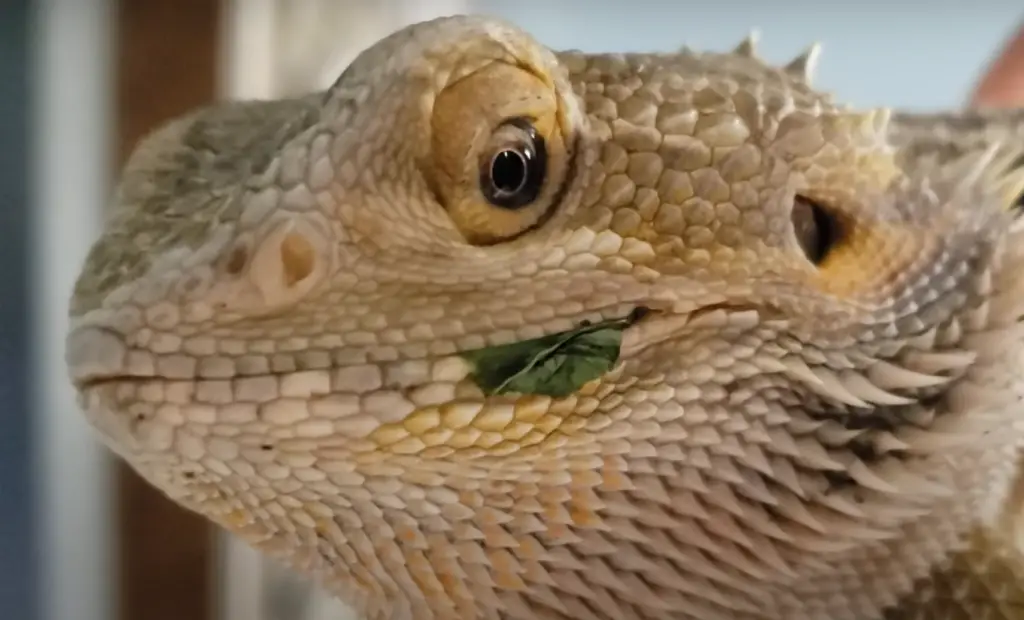
The larger scales on their upper side, back and tail, have small ridges and grooves called “osteoderms,” which help strengthen and protect their bones from injuries. These amazing scales and colors can vary greatly, depending on the species, gender, age, or even the individual animal itself. [2]
Beard
The beard or “gular flap” is another unique feature of bearded dragons. The beard is located on their neck and is made of flexible skin that they can puff out and change color in response to different situations. Typically, when the dragon is feeling threatened, displaying dominance, alarmed or trying to attract a mate, the beard will turn black or go in darker colors, indicating warning signals. When the dragon is relaxed, the beard is usually flat and lighter in color. [2]
Digestive System
These reptiles are omnivorous and they have an interesting digestive system. They have a long gastrointestinal (GI) tract that is designed to extract maximal nutrients from the food. Their GI tract includes the esophagus, stomach, small intestine, large intestine, cloaca, and rectum. Their stomach is divided into two parts that allow for better digestion of protein and fiber-rich foods. Additionally, bearded dragons do not have teeth; instead, they have powerful jaws that help them crush and swallow their prey and grind up vegetation.
Respiratory System
Bearded dragons have a highly developed respiratory system that allows them to absorb oxygen from their environment efficiently. They have two lungs that are located on their sides, just behind their heart, and are connected to a system of air sacs that helps them store air during inhalation and exhalation. Additionally, they have a unique nasal cavity that enables them to breathe through both their nose and mouth, which can help them regulate their body temperature.
Nervous System
Bearded dragons have a complex nervous system that helps them process and respond to their environment effectively. They have a large brain that is composed of different regions that control different functions, such as sight, smell, and movement. They are also known for their ability to sense vibrations through their body, which allows them to detect predators or prey and navigate their environment effectively.
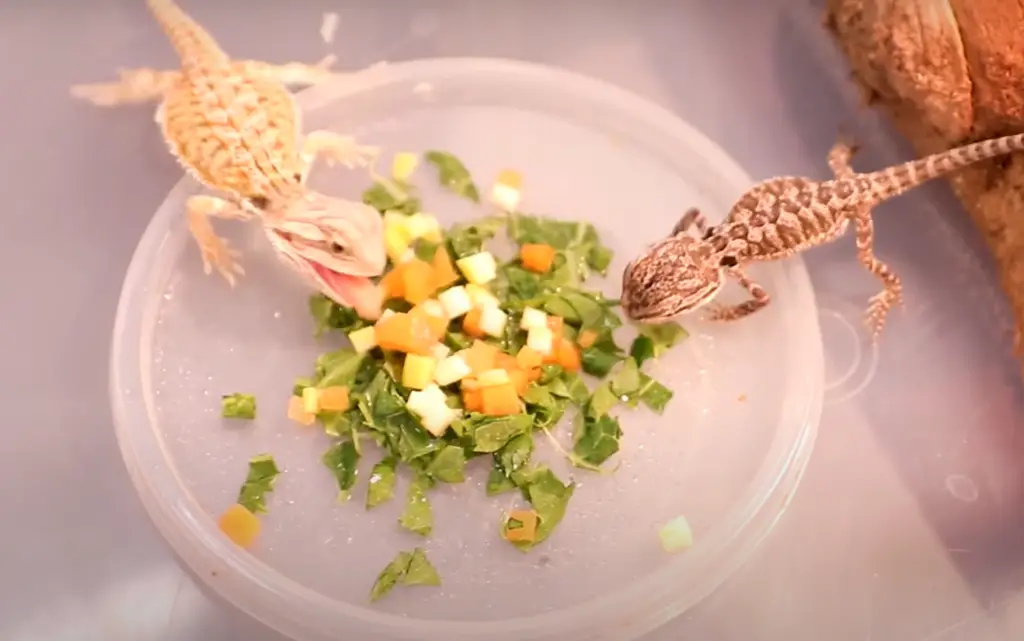
As you can see, bearded dragons have a unique anatomy that is fascinating and essential for their survival. Understanding their anatomy can help you provide the best possible care for your pet dragon. Whether it’s through their skin and scales, beard, digestive system, respiratory system, or nervous system, bearded dragons are impressive creatures that continue to captivate pet owners and researchers alike. So, the next time you look at your pet bearded dragon, take a closer look at their anatomy and appreciate all the amazing features that make them so special!
Do Beardies Have Teeth?
Bearded dragons are popular pets for many reptile enthusiasts because of their fascinating and unique features. One question pet lovers often ask is whether these reptiles have teeth or not. Knowing whether your pet has teeth or not is important because it will help you understand how to care for them properly. Now we will explore the topic of whether bearded dragons have teeth and how to care for them.
Yes, bearded dragons have teeth, but they don’t have teeth like we do. Their teeth are designed for a specific purpose, which is to grasp and tear their food. Unlike humans and many other animals that use their teeth to grind food, bearded dragons rely on their powerful jaws and sharp teeth to break down their prey before swallowing it whole. Therefore, their teeth are not as prominent and sharp as those of other animals, but are still an important part of their anatomy.
Bearded dragons’ teeth are called acrodont teeth, which means that they are attached to the edge of the jawbone. Unlike humans, who have teeth anchored to sockets in their jawbone, bearded dragons’ teeth are only connected to the outer edges of the jaw. This arrangement is unique to reptiles and is an adaptation that allows them to be able to replace their teeth throughout their lifetime, unlike mammals who have a limited number of teeth that are replaced once or twice in their lifetime.
Bearded dragons’ teeth are not as robust as the teeth of some other animals like carnivorous reptiles or so their teeth do not require as much care. However, they still need some dental care to avoid dental problems. Dental problems can occur when food debris accumulates between teeth over time and is not cleaned properly. This could lead to gum diseases, cavities, and in severe cases, tooth loss. To prevent these problems, beardies’ teeth have to be cleaned regularly with a soft-bristled toothbrush, or you can give them toys that help remove food debris.
Another dental issue that beardies face is mouth rot. Mouth rot, also known as necrotic stomatitis, is an infectious bacterial disease that affects the mouth area of bearded dragons. It is a severe condition that causes the beardies to experience a lot of pain and discomfort. The disease is caused by poor hygiene and improper diet. If you notice any signs of mouth rot in your pet, such as swelling or redness around the mouth, discharge, or bad breath, you should take your pet to a vet immediately.
In conclusion, bearded dragons have teeth, and they use them to grasp and tear prey. While their teeth don’t require a lot of maintenance, it’s essential to clean them regularly to prevent dental issues. When you remove any food debris from their teeth, there will be a lower risk of gum diseases, cavities or tooth loss. Moreover, always consult a vet if you think your pet is suffering from any dental problems. Taking care of your pet’s dental health might not seem important but it is a core element of keeping them healthy and happy.
TOP Things That Damage Bearded Dragons Teeth
Bearded dragons are adorable and friendly pets that can become your new best friend. However, like any other pet, they do require some care and attention, especially when it comes to their dental health.
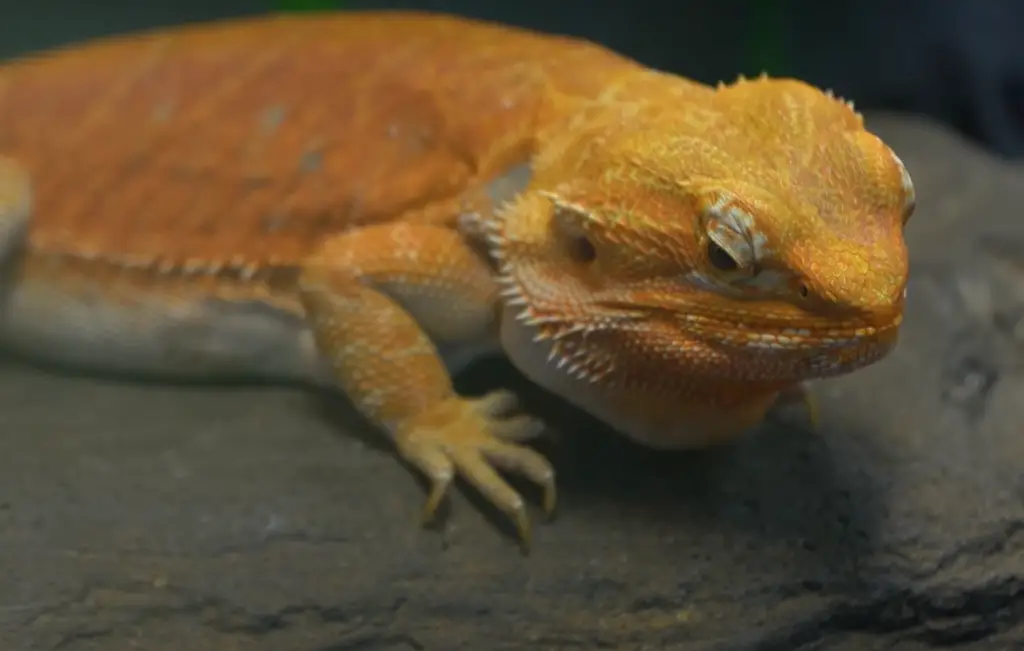
If you are an owner of a beardie, this part of our article is highly important for you to read, as here we are discussing the TOP things that damage bearded dragons teeth.
Feeding Incorrect Diet
The diet of a bearded dragon has a significant impact on their dental health. The wrong diet can lead to dental issues such as tooth decay or tooth loss. Bearded dragons require a specific diet that includes a mixture of vegetables, fruits, and insects. They need the right balance of calcium and phosphorus for their teeth and bones. Feeding them an incorrect diet, such as not including enough calcium or feeding only insects, can cause dental issues. [3]
Improper Handling
Bearded dragons are known to be pretty sensitive creatures, and handling them improperly or forcefully can harm their teeth. If they are held improperly, they can try to escape and, as a result, cause damage to their teeth. Always handle your bearded dragon gently and with care to avoid causing damage to their teeth. [3]
Not Providing Enough Water
Not providing enough water can have a significant impact on the dental health of these reptiles. They need water to rinse their mouth after eating and to keep their mouth hydrated. The dry mouth can lead to bad breath and tooth decay. Always make sure that your bearded dragon has clean water available at all times.
Poor Quality Lighting
Bearded dragons are diurnal animals and require UVB lighting to stay healthy. The lack of UVB lighting can have a significant impact on their dental health by causing the low mineralization of the jawbone. As a result, their teeth may fall out, become loose, or discolored. Always ensure that your bearded dragon has proper lighting to keep their teeth healthy.
How to Clean Beardie’s Teeth: a Step-By-Step Guide
Taking care of a bearded dragon is more than just providing them food and shelter. You also need to ensure that they maintain proper dental hygiene because like human teeth, their teeth can also accumulate colorful gunk and tartar buildup. Good dental care habits must start when they are young, and as a beardie owner, you are responsible for keeping their teeth and gums healthy.
- Step 1: Preparation is key. Before cleaning your beardie’s teeth, ensure that you have all the supplies on hand. These include a soft-bristled toothbrush, a small dish of warm water, and some reptile-safe toothpaste. Do not use human toothpaste as it contains fluoride, which can be harmful to your beardie. Also, make sure that your beardie is comfortable before you begin cleaning their teeth.
- Step 2: Once you have everything you need, you can start brushing your beardie’s teeth in circular motions using the toothbrush and reptile-safe toothpaste. Note that it is normal for your beardie to resist the toothbrush the first time you try. In this case, gently calm them down and try again. It usually gets easier as they get used to the idea of getting their teeth cleaned.
- Step 3: Rinse the toothbrush in warm water every few strokes to avoid contaminating your beardie’s mouth with bacteria or toothbrush fibers.
- Step 4: Avoid using too much force while brushing your beardie’s teeth as they have thin and fragile teeth. Instead, apply light pressure and be cautious about where and how you brush. Focus on the chewing surface of their teeth and the areas where their teeth touch. Also, be sure to brush the teeth at the back of their mouth as it is usually overlooked.
- Step 5: Once you are done cleaning your beardie’s teeth, reward them with some fresh water or small piece of fruit. This way, over time, they will not only get used to the tooth-brushing process but will also associate it with a treat.
Keeping your beardie’s teeth clean can be a challenging task, but with the right procedures and approach, you can ensure they maintain good dental health. When you clean your bearded dragon’s teeth, be sure to follow a standard procedure and always use clean and fresh toothbrushes. With the step-by-step guide provided in this blog, you can take care of your beardie’s teeth like a pro.
So give them the best care they deserve!FAQ
Do bearded dragons Teeth fall out?
Yes, bearded dragons’ teeth do fall out. As with most reptiles, bearded dragons continually replace their teeth throughout their lives. Younger bearded dragons tend to lose their teeth more frequently as they are growing. However, you may notice teeth falling out occasionally even in fully grown bearded dragons. This isn’t a cause for concern, but you should make sure they have access to plenty of calcium and vitamin D to keep their teeth healthy, as weak teeth can lead to infections.
What should bearded dragon teeth look like?
Bearded dragon teeth should be bright white or slightly yellow and firmly attached to the gums. If you notice any discoloration or loose teeth, this can indicate dental problems and needs to be addressed immediately. You can help prevent dental issues by feeding your bearded dragon a healthy diet containing calcium and vitamin D-rich foods, as well as reducing their sugar intake.
Why can’t you kiss a Bearded dragon?
As much as you may love your bearded dragon, you shouldn’t kiss them. Bearded dragons, like all reptiles, have a bacteria in their mouth that can be harmful to humans. While most healthy adults can fight off the bacteria, children, pregnant women, and people with weakened immune systems are at risk. Instead of kissing your bearded dragon, show them affection by spending time with them, handling them gently, and giving them plenty of love.
Useful Video: Do Bearded DRAGONS have TEETH and Fangs?
Conclusions
In conclusion, Bearded dragons do have teeth, but they’re not what you’d expect. These small but sharp teeth line their jaws and are used to grab and hold onto prey. They are not used for chewing or grinding food. So, if you’re planning on keeping a bearded dragon as a pet, be sure to handle them gently and avoid any sudden movements to prevent them from feeling threatened or stressed. Remember, the most vital thing to ensure the healthy life of your pet is to provide adequate care and attention.
References:
- https://www.petmd.com/reptile/bearded-dragon-care-101#:~:text=The%20average%20bearded%20dragon’s%20lifespan,and%20expand%20based%20on%20mood.
- https://lafeber.com/vet/basic-information-for-the-inland-bearded-dragon/
- https://dragonsdiet.com/blogs/dragon-care/to-brush-or-not-to-brush-taking-care-of-your-bearded-dragon-s-teeth

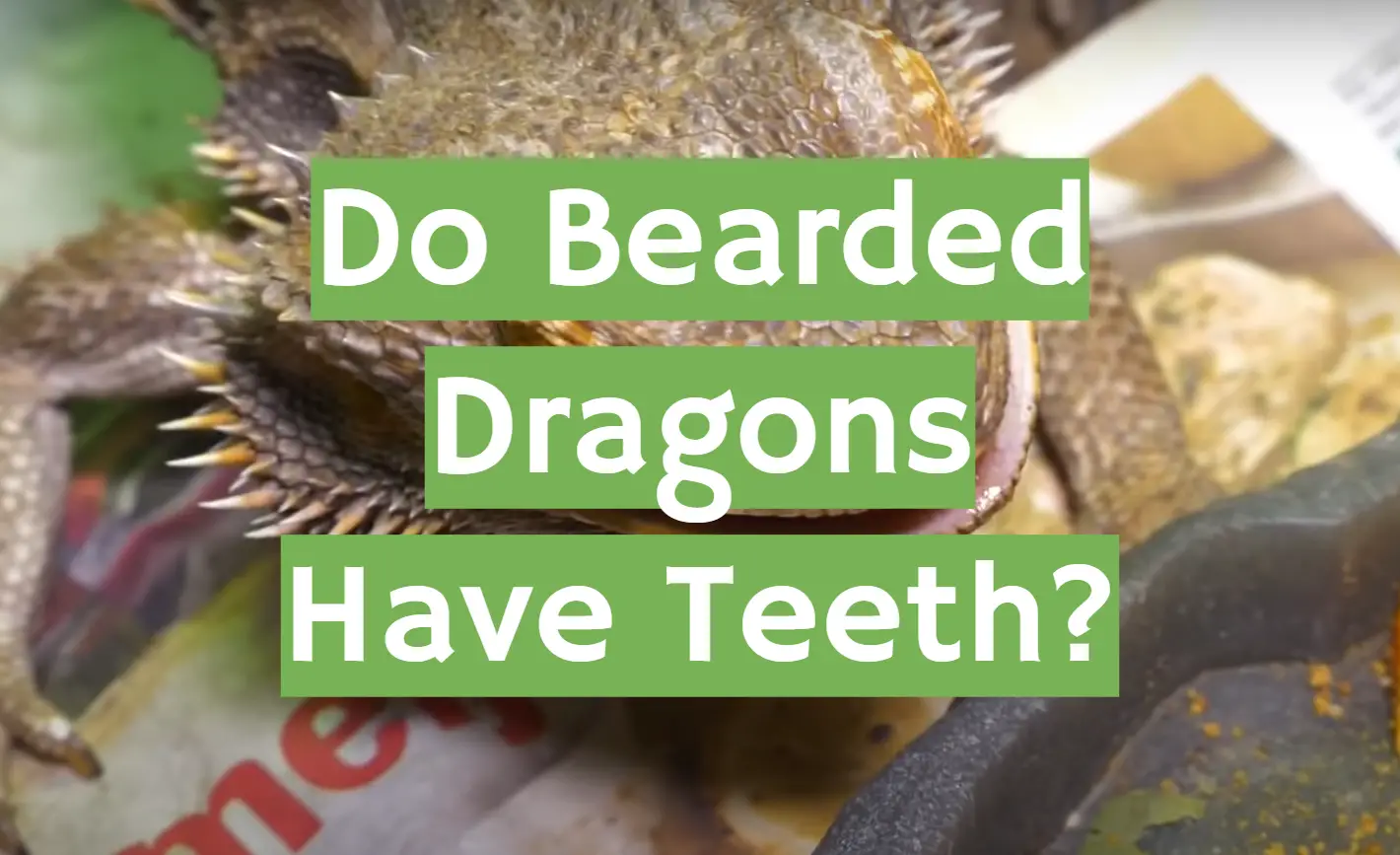
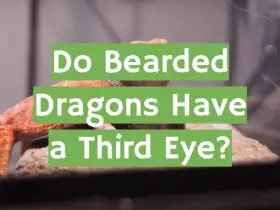

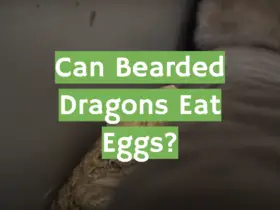
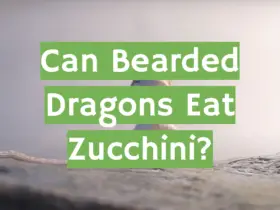
Leave a Review